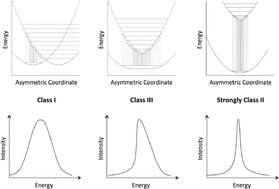Redox active quadruply bonded units, M2, can be combined so that they either (i) are bridged by an organic linker or (ii) function as a bridge between two identical organic ligands. When two M2 units are linked together by an organic group that affords M2δ-bridge π-conjugation the electronic structure of each M2 unit is perturbed by the other in the ground state, the photoexcited states, and the mixed valence oxidized form. Similarly when a M2 center links two organic π systems represented by L, the two organic units are coupled by Lπ*-M2δ-Lπ* interactions in their ground state, their photoexcited states, and the mixed valence reduced state. The photoexcited states of the neutral complexes (both case i and ii) provide examples of excited state mixed valence. In case (i), the positive charge may be localized on one dinuclear center or may be delocalized over both M2 units. Similarly in (ii), the electron may be localized on one ligand or delocalized over both. In this tutorial review, spectroscopic studies (UV-vis-NIR absorption, steady state emission, EPR, and time resolved infrared) of these mixed valence systems employing carboxylate tethers are described and the data are discussed in terms of contemporary theories of mixed valence ions.

You have access to this article
 Please wait while we load your content...
Something went wrong. Try again?
Please wait while we load your content...
Something went wrong. Try again?


 Please wait while we load your content...
Please wait while we load your content...